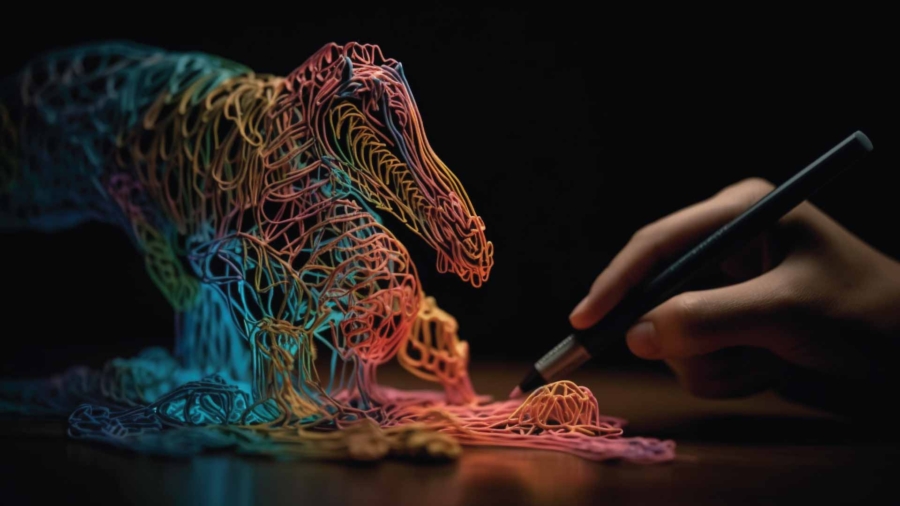Introduction : Importance of design
Welcome to the world of geometric patterns in graphic design, where shapes, lines, and angles come together to form eye-catching visuals that inspire and captivate. In this article, we’ll explore the fascinating realm of geometric design, uncovering the beauty of simple shapes and intricate patterns. Whether you’re a graphic design enthusiast, a professional designer looking for inspiration, or someone who simply appreciates the art of design, this article is worth reading. Join us on a journey to discover the best geometric design examples, learn how to create your own stunning patterns, and explore the endless possibilities of this design style.
Geometric Patterns: A Design Wonderland
Geometric patterns have a timeless appeal in graphic design. We’ll dive into what makes them so captivating and how they can transform the ordinary into the extraordinary. Discover how simplicity and complexity coexist harmoniously in this design style.
What Makes Geometric Patterns So Captivating?
Geometric patterns have been used in design for centuries, and yet they continue to capture our attention time and time again. But what is it exactly that makes these patterns so captivating? Let’s explore some of the key factors:
Symmetry
One of the main reasons why geometric patterns are so appealing is because of their symmetry. Symmetry is a fundamental concept in mathematics and design, and it refers to the balance and harmonious proportions between different elements within a pattern. This creates a sense of visual equilibrium and order that our brains find pleasing.
Repetition
Another important aspect of geometric patterns is repetition. By repeating shapes or motifs, designers can create rhythm and movement within their designs. This can add a sense of dynamism and energy to an otherwise static image.
Precision
Geometric patterns are often associated with precision, which is another reason why they are so captivating. The use of precise shapes and lines creates a sense of order and structure that our brains find aesthetically pleasing.
The Magic of Geometric Shapes
Geometric design starts with the basic building blocks of shapes. We’ll explore the fundamental geometric shapes commonly used in design and how they serve as the foundation for creating intricate patterns.
Getting Started with Geometric Pattern Design
Feeling inspired to embark on your geometric design journey? We’ll guide you on where to find inspiration and introduce you to the essential tools and software required to bring your geometric patterns to life.
The Art of Combining Shapes
Creating stunning geometric patterns often involves combining different shapes in creative ways. Learn the art of shape combination and discover the role that symmetry plays in achieving balance and harmony.
Playing with Colors and Gradients
Colors and gradients are essential elements in geometric design. Explore how the choice of colors and gradients can elevate the impact of your patterns and learn about popular color schemes used in this style.
Geometric Patterns in Graphic Design: Real-Life Examples
To truly appreciate the versatility of geometric patterns, we’ll showcase a collection of real-life design examples from various industries and design styles. These examples will inspire your own creative endeavors.
Creating Simple Geometric Patterns Using Adobe Illustrator
Ready to roll up your sleeves and create your geometric patterns? We’ll provide a step-by-step tutorial on using Adobe Illustrator, complete with key techniques and shortcuts for efficient design.
Procreate: Taking Geometric Design to the Next Level
Discover how Procreate, a digital design tool, can empower you to create amazing geometric designs effortlessly. We’ll explore the unique features and benefits of Procreate for designers.
Designing with Diagonal Lines and Angles
Diagonal lines and angles add dynamic energy to geometric design. We’ll explore how you can use diagonals effectively to create a sense of movement and excitement in your patterns.
Keep It Simple: Minimalistic Geometric Patterns
Sometimes, less is more. We’ll delve into the beauty of minimalistic geometric patterns and how simplicity can create striking visual effects that leave a lasting impression. Whether you’re a graphic designer looking for inspiration or a business owner in need of branding ideas, this is the guide for you.
What are Minimalistic Geometric Patterns?
Minimalistic geometric patterns refer to simple and clean designs made up of basic shapes such as lines, circles, squares, and triangles. These patterns are often created with just one or two colors and have a minimal amount of detail. They are characterized by their clean and modern aesthetic, making them a popular choice in graphic design and branding.
Why Use Minimalistic Geometric Patterns?
There are many reasons why minimalistic geometric patterns have gained popularity in recent years. Here are some of the key benefits:
- Clean and Modern Aesthetic: As mentioned earlier, these patterns have a clean and modern aesthetic that can make your design or branding look sleek and professional.
- Versatility: Minimalistic geometric patterns can be used in a variety of industries and for different purposes, making them a versatile choice for designers and businesses.
- Memorable and Eye-Catching: Sometimes, simplicity can be more eye-catching than complex designs. The use of basic shapes in minimalistic geometric patterns can create a striking visual impact that is memorable and stands out.
- Timeless Design Ideas: These patterns have a timeless quality to them, meaning they won’t go out of style quickly. This makes them a great option for long-term branding.
How to Use Minimalistic Geometric Patterns in Graphic Design
Now that we understand the benefits of using minimalistic geometric patterns, let’s explore how to incorporate them into your graphic design projects:
- Backgrounds: One of the most common ways to use these patterns in graphic design is as backgrounds. They can add interest and texture to an otherwise plain design.
- Logos: Another popular use for minimalistic geometric patterns is in logos. The simplicity of these patterns makes them easy to incorporate into a logo design without overwhelming it.
- Packaging: Minimalistic geometric patterns can also be used on packaging designs. They can create a clean and modern look while still adding visual interest to the product.
- Marketing Materials: Whether it’s flyers, brochures, or social media graphics, minimalistic geometric patterns can add an extra element of style to your marketing materials.
How to Use Minimalistic Geometric Patterns in Branding
Minimalistic geometric patterns can also be effectively used in branding. Here are some tips for incorporating them into your brand design:
- Consistency: When using minimalistic geometric patterns in your branding, it’s important to maintain consistency across all elements such as logos, color schemes, and marketing materials.
- Color Choice: As mentioned earlier, these patterns are often created with just one or two colors. When choosing the colors for your brand, make sure they align with your overall brand aesthetic and messaging.
- Subtle Branding: Incorporating minimalistic geometric patterns into your branding can be a subtle way to showcase your brand without being too obvious. This can create a more sophisticated and modern look.
Inspiration for Minimalistic Geometric Patterns
If you’re struggling to come up with ideas for your own minimalistic geometric patterns, here are some sources of inspiration:
- Nature: Nature is full of simple and clean shapes that can be translated into beautiful geometric patterns. Look at the world around you for inspiration.
- Art and Architecture: Art and architecture are also great sources of inspiration for minimalistic geometric patterns. From famous paintings to modern buildings, there is no shortage of ideas to be found.
- Online Resources: Many online resources offer free or affordable minimalistic geometric pattern designs that you can use in your projects.
Conclusion
As we conclude our exploration of geometric patterns in graphic design, here are some key takeaways to remember:
– Geometric patterns have a timeless appeal and offer endless creative possibilities.
– Fundamental geometric shapes serve as the foundation for creating intricate patterns.
– Inspiration can be found everywhere, and the right tools are essential for bringing your designs to life.
– Combining shapes, playing with colors, and experimenting with gradients are key design techniques.
– Real-life examples showcase the versatility of geometric patterns across different industries.
– Adobe Illustrator and Procreate are powerful tools for creating your own geometric designs.
– Diagonal lines and angles add dynamism, while minimalism can create a striking effect.
With these insights, you’re ready to dive into the world of geometric patterns and let your creativity soar. Whether you’re designing for business, art, or personal expression, geometric patterns offer a captivating canvas to explore and create stunning visuals.
Graphic design plays a crucial role in conveying brand messages and creating visual identities that resonate with target audiences. It enhances brand recognition, fosters customer trust, and boosts sales.
Graphic design not only enhances the visual appeal of digital products but also influences users’ interactions with websites, apps, and interfaces. It contributes to creating intuitive and engaging experiences for the end-users.
A career in graphic design demands proficiency in design software, a strong understanding of typography, layout, and color theory, as well as the ability to think creatively and problem-solve visually.
Graphic design assists in crafting a unique brand identity by employing visual elements such as logos, color schemes, and typography, which collectively embody the brand’s personality and values.
A top creative studio in Ahmedabad is responsible for leveraging its design expertise to address diverse client needs, produce innovative visual solutions, and contribute to the growth of businesses through effective design strategies.
Understanding the latest trends in graphic design is crucial for staying relevant and competitive in the industry. It enables designers to continuously evolve their skills and offer fresh, contemporary design solutions.
Studying graphic design equips individuals with the knowledge and expertise required to navigate the dynamic digital landscape, enabling them to create impactful visual content across various mediums.
In a creative studio, a graphic designer is responsible for conceptualizing and producing visual content, collaborating with cross-functional teams, and playing a key role in the ideation and execution of design projects.
The field of graphic design offers diverse career paths, including roles in advertising, branding, web design, packaging, and print media. Professionals can explore numerous job opportunities in both corporate and creative agency settings.
When combining several geometric shapes in pattern design, it’s important to ensure balance and visual harmony. Experiment with various combinations, sizes, and arrangements to achieve aesthetically pleasing results.


